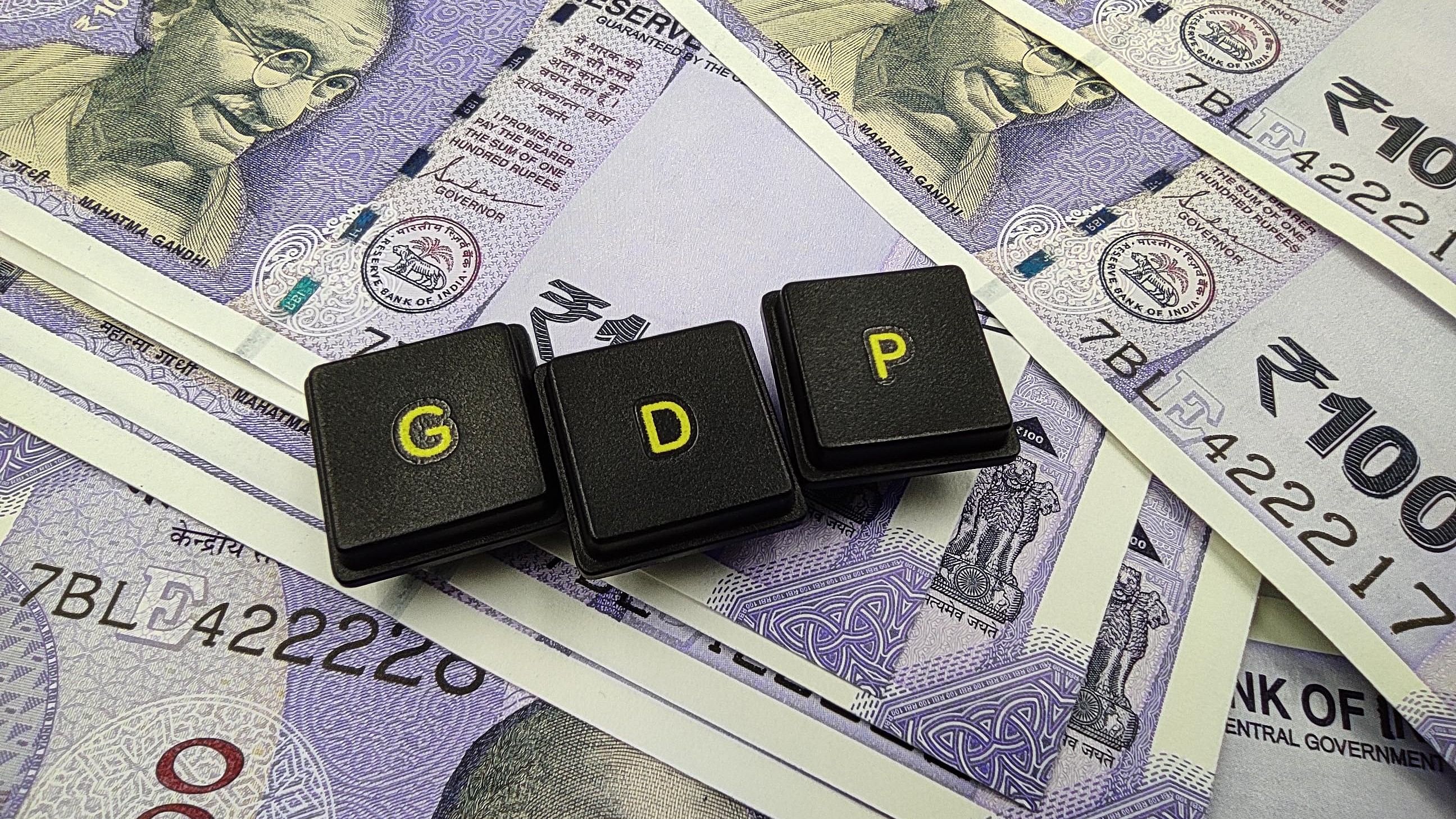
Representative image of India's GDP.
Credit: iStock Photo
New Delhi: India’s economy grew by 8.2 per cent in the financial year ended March 2024, sharply higher than 7 per cent expansion recorded in the previous year, led by a robust performance of manufacturing and construction sectors, official data showed on Friday.
Beating expectations of analysts as well as the government, including the Reserve Bank of India (RBI), the country’s gross domestic product (GDP) grew by 7.8 per cent in January-March quarter (Q4FY24), in what comes as a boost to Prime Minister Narendra Modi’s economic message ahead of the last phase of the Lok Sabha polls.
“The Q4 GDP growth data for 2023-24 shows robust momentum in our economy which is poised to further accelerate. Thanks to the hardworking people of our country, 8.2 per cent growth for the year 2023-24 exemplifies that India continues to be the fastest growing major economy globally,” Modi posted on X.
In its April monetary policy review, the RBI had pegged the Q4 growth number at 7 per cent. Most economists and analysts had predicted the Q4 growth data below 7 per cent and FY24 growth below or around 8 per cent. The full-year numbers are sharply higher than the 7.6% growth estimated by the National Statistical Office (NSO) in February.
“While the high frequency indicators were showing healthy economic momentum, the sharp jump in GDP growth numbers for FY24 has come as a positive surprise,” said Rajani Sinha, chief economist at CareEdge Ratings.
Real GDP, or GDP at constant prices, increased to Rs 173.82 lakh crore in FY24 from Rs 160.71 lakh crore in the previous year, registering a growth of 8.2 per cent, data released by the National Statistical Office (NSO) showed.
“This remarkable GDP growth rate is the highest among the major economies of the world. It is worthwhile to note that the manufacturing sector witnessed a significant growth of 9.9% in 2023-24, highlighting the success of the Modi government's efforts for the sector,” Finance Minister Nirmala Sitharaman said on X.
The third quarter growth data has also been revised upwards to 8.6% from 8.4%. In Q1, growth stood at 8.2% and Q2 at 8.1%. Despite beating the analyst expectations, the Q4 number is the weakest in a year.
With the robust numbers, India has further consolidated its position as the fastest growing major economy. With 5.2 per cent growth, China stands at distant second followed by Indonesia at 5.1 per cent and Mexico 3.2 per cent.
Lower inflation played a key role in the robust FY24 GDP growth number. Nominal GDP growth in 2022-23 was 14.2%, while the real GDP growth stood at only 7%. During the financial year 2023-24, the real GDP growth is higher despite lower nominal GDP growth numbers.
Real gross value added (GVA) growth accelerated to 7.2% in 2023-24 from 6.7% in 2022-23. This GVA growth has been mainly due to significant growth of 9.9% in the manufacturing sector in 2023-24 over a contraction of 2.2% in 2022-23.
GVA is the value of goods and services produced in a country minus input costs, including raw materials. It adjusts GDP by adding subsidies and deducting taxes on products.
“As against the perception from select quarters in the market that decline in subsidies largely propelled FY24 growth, the truth aligns with a huge increase in net direct taxes. We believe that this trend will remain active in FY25 also and GDP growth may reach the 7.5% mark,” said Soumya Kanti Ghosh, Chief Economic Advisor, State Bank of India.
DK Srivastava, Chief Policy Advisor, EY India, said the large investment push by the government is the main growth driver. While private final consumption expenditure growth is still languishing at 4%, the main demand side push is coming from gross fixed capital formation which has grown at 9%, Srivastava said.